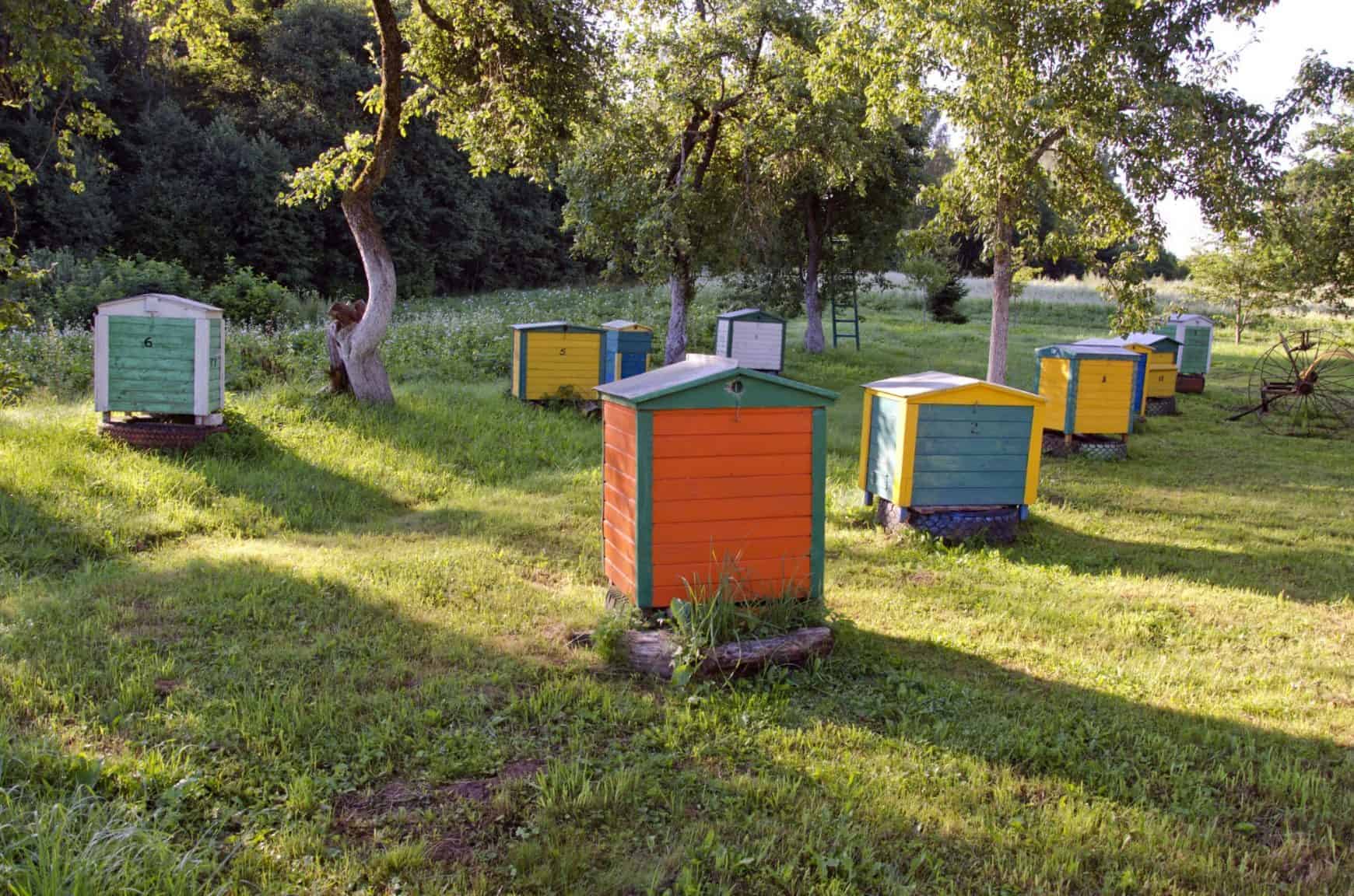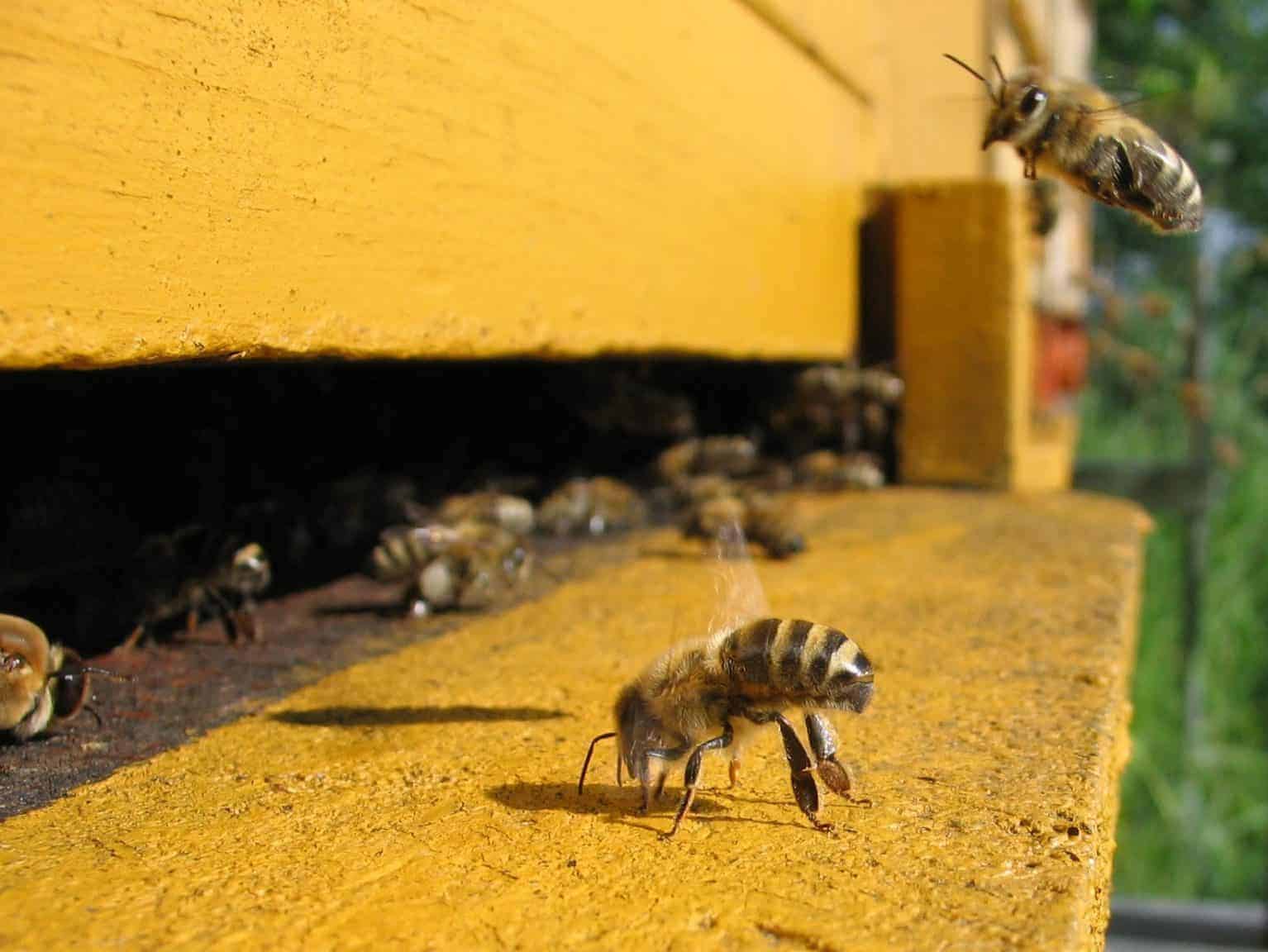Are your bees cranky?
Are they on edge and don’t appreciate you being around? You used to be friends right? Spending an afternoon with the girls was something to which you used to look forward, but suddenly things have changed.
In this first article (of two) we are going to take a look at what’s going on in the hive this time of year and twhat you can do as a beekeeper to possibly help out your bees.
What’s going on inside and outside of your bee hives?
The opening line might lead you to believe that somehow your colonies have become filled with frankenbees ready to attack at any moment. Well that’s not quite true, but some big changes are taking place inside your bee hives this time of year. Those docile bees you’ve been working with all summer are likely to become a little extra defensive. So you may be wondering just what’s happened to your girls?
This time of year, at least in the northern part of the country, the bees are preparing the hive for winter. Drone numbers are in decline and when they return to the hive from their flights to the DCA (Drone Congregation Area) the workers aren’t so anxious to feed them. Soon they will literally be kicking them out. With the breeding season over, the drones have served their purpose after assisting in the process of requeening hives and the establishment of new ones. Now their presence would only serve to deplete winter food supplies.
In preparation for winter the queen has been laying fewer eggs and the number of bees in the hive is declining. This means the mite count is likely to be climbing. More mites per bee can put your bees on edge and a mite count of five percent or more likely means your hive is in trouble and treatment should be considered if you treat for mites.
With the shorter days and cooler nights your girls know the seasons will soon change. They naturally become more defensive of the food supply that is intended to see them through the chilly winter months.
Outside the hive the nectar flow is dropping off and this can mean more robbing. At the same time hungry hornets and yellow jacket numbers are peaking. Your colonies will be very busy defending against these predators and against robber bees from other colonies.
As if that weren’t enough, it won’t be long before field mice will begin looking for a cozy winter home and that propolis sealed, honey bee heated, hive box filled with honey will begin to look very attractive.
It’s no wonder you may find your girls a little on edge. You will come to find that it happens this way every season. No worries though. Come next spring you will find they are the same old friendly bees they always were, But first, you must see them through the winter.
How can a beekeeper help?
The starting point is an understanding that the bees really do know what’s best and a healthy hive will generally see itself through the winter just fine. However, seasonal variations such as a year of poor nectar flows or high mite counts can leave a colony vulnerable to the coming winter season. So let’s review a few things a beekeeper can do to improve a colony’s chance of successfully wintering.
Mites
If your mite count reveals a level of mites of five percent or greater your bees are in danger of falling prey to mites and the diseases associated with them. Whether to treat for mites or not has been discussed in other articles and is outside the scope of this discussion.
If you are treating for mites, there is one product certified for use as an “organic” control and that is Mite Away Quick Strips, or MAQS. These are gel strips that contain formic acid and are laid across the top of brood frames. The treatment period is just seven days but you must use this product at temperatures below 84 degrees.
Two other options are also available. Api Life Var Thymol strips can be used in warmer temperatures but three applications are required at 7 to 10 day intervals. The active ingredient is thymol which comes from the Thyme plant.
Hopguard II is a natural, food grade product derived from hop compounds but to be honest, there is still a bit of debate regarding its effectiveness. Still, you might want to look into it and decide for yourself.

Robber Bees
You can set out traps for wasps, hornets and yellow jackets and now would be a good time to do so. You can also put a robber screen on the front of your hive if it becomes a problem; but what about robber bees from colonies within your own apiary?
The best way to prevent your own bees from robbing other hives is to combine weaker colonies to make a stronger hive that is tougher to rob. A robbing frenzy at this time of year can literally destroy a colony in just a few hours, so at the very least you should reduce the entrance on a weaker hive. What should you do if you discover a colony being robbed? Quickly get a wet sheet, close up the hive entrance and lay the sheet over the hive. Keep the sheet wet to help cool the hive.
Feeding
Hopefully your bees have had a great season and put away plenty of honey for the winter. However, if that is not the case you will want to begin feeding a two parts sugar to one part water syrup. Bees cap honey after it has been reduced to about 18 percent moisture and to help them get there this late in the season you want syrup that already contains less water.
Be sure you use only pure cane sugar and not beet sugar or organic sugar, both of which will make your bees sick. You will also want to use an in-hive feeder to prevent robbing from getting started.
A preferable route to feeding is to remove honey from other colonies that have extra honey and place it in the hives that are in need.
Honey Harvest
This is the time of year most of us are hoping to share in a little of the bees golden nectar. Whether you use the crush-and-strain method or an extractor to obtain your honey, there are some things to consider when taking honey from the hive.
When you are done with the frames or top bars you removed the honey from, place them back inside the hive for a few days and the bees will clean them up.
If you have extra honey you may want to consider saving a few frames for next spring in case a colony runs short. To prevent the wax moth from developing, freeze the frame for a couple days to kill any eggs. If you wrap the frame in plastic wrap first it will prevent it from sweating after it’s removed from the freezer. Then store it in a sealed container.
How to leave the hive after honey harvest
Sometimes we end up with a hive that just goes wonky on us and end up with frames of honey scattered throughout the hive. After your harvest you may want to consider consolidating your frames of stores.
Throughout the winter your bees need to always be able to access honey, so placing frames of honey on each side of the brood nest can be helpful because you don’t know to which side of the box they may migrate to during the winter. The same goes for a top bar hive and you will want to make sure there is honey on each side of the brood nest since you don’t know which direction the cluster will move. If they do not have constant contact with honey they will likely starve, even though more honey is located right next door.
In the upper boxes you will want to leave some frames of honey that are not entirely full. The bees cannot move up in cold weather unless there is some open comb along the bottom of the frames the “heater bees” can move into.
Doing all of this now allows time for the bees to configure the brood chamber the way they want it for winter.
Mice
Just a short note on mice. They can leave one heck of a mess for you to clean up in the spring if they get inside a hive. They will also eat the honey stores. There’s an easy fix for this one and it’s not expensive. Simply install a mouse guard at the front of each hive and its problem solved.

